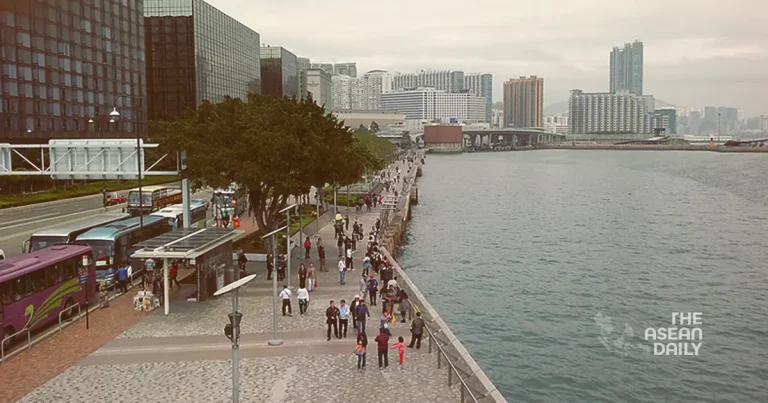27-6-2024 (HONG KONG) In a strategic move to bolster its workforce and inject fresh perspectives, the Hong Kong government has set its sights on recruiting talent from Southeast Asia and Europe, aiming to supplement and diversify the city’s imported labor force. This initiative comes as Hong Kong seeks to address labor shortages across various sectors and foster a more inclusive and globally competitive business environment.
Malaysia has emerged as a key potential source of talent, with the city’s labor minister, Chris Sun, highlighting the multilingual capabilities of Malaysians as a significant asset. “Malaysians are fluent in English, and many also speak fluent Cantonese and Mandarin,” Sun told local media on June 18, emphasizing that such language proficiency would facilitate their integration into the local community and strengthen Hong Kong’s connections with the Southeast Asian market.
Sun expressed optimism about the talent pool in Malaysia, stating, “There is a good talent pool (in Malaysia), and I think it’s worthwhile for us to give it a try.” Additionally, the government aims to attract financial and technology professionals from Europe, further diversifying Hong Kong’s skillset and global outlook.
While mainland Chinese professionals have historically dominated Hong Kong’s imported labor force, accounting for over 90% of the approximately 59,000 non-local professionals brought to the city under the Top Talent Pass Scheme since December 2022, the government recognizes the need for a more balanced and diverse workforce.
The Malaysian Chamber of Commerce in Hong Kong and Macau has welcomed the government’s focus on talent recruitment in Malaysia, viewing it as a commitment to fostering a skilled and culturally diverse workforce. The chamber highlighted the benefits of the simplified visa procedures under the Top Talent Pass Scheme for Malaysian professionals.
To attract more Malaysian talents, including Muslims, the chamber emphasized the importance of nurturing greater cultural sensitivity and ensuring better access to halal goods in Hong Kong.
Yee Lisan, a 34-year-old Malaysian who relocated to Hong Kong as a regional marketing manager in April 2021, shared her positive experience with the city’s quality of life. “My favorite thing about Hong Kong is the fact that I can head to the beach, hills, or to the city all within 20 minutes,” she said, appreciating the convenience of the compact city.
However, Yee acknowledged areas for improvement, such as the limited availability of halal food options, which can pose challenges for her Muslim friends visiting the city.
Recognizing this concern, Hong Kong officials announced in May their efforts to offer more halal food choices across the city, aiming to woo visitors from Southeast Asia, the Middle East, and other Muslim-majority regions.
While lawmakers have raised concerns about the lack of diversity in Hong Kong’s imported labor force, with mainlanders accounting for three in four of the 180,000 workers brought to the city across all talent schemes since December 2022, Sun urged them to consider the broader picture. He argued that the fact that many younger candidates from the Top Talent Pass Scheme graduated from prestigious US universities contributes to diversity, even if they are mainland Chinese.
As the possibility of foreigners, particularly those in lower-skilled segments of the labor force, entering the job market increases, local workers in some sectors have expressed apprehensions. Two workers’ unions jointly opposed a government plan to further raise the quota for imported residential care home workers to 15,000, citing threats to local employment.
Similarly, unions representing bus service workers criticized a move to allow a bus operator to hire 20 mainland drivers, fearing potential job losses for locals.
However, Professor Terence Chong, an economist at the Chinese University of Hong Kong, cautioned against a myopic view that imported workers would necessarily hurt locals’ livelihoods. He argued that an insufficient labor supply would ultimately harm the economy and all Hong Kongers, highlighting the importance of filling vacant roles, especially in sectors where locals are reluctant to work, such as care homes.
Hong Kong has been actively recruiting imported workers to plug labor gaps in various sectors, including higher-skilled professional services, construction, transport, and healthcare. This effort comes after the city lost more than 250,000 members of its 3.99 million-strong workforce between 2019 and 2022, attributed to factors such as the 2019 anti-government protests, the 2020 national security law imposition, and tight COVID-19 restrictions during the pandemic.
While labor groups have criticized the government’s efforts to bring in more workers as bypassing union scrutiny and disregarding local concerns, Professor Chong argued that these policies have helped replenish Hong Kong’s labor supply. The workforce has since recovered to about 3.81 million as of May, with the unemployment rate stabilizing around 3%, compared to around 5% during the pandemic.
“We have to look at labor issues from the interests of Hong Kong as a whole, rather than just from one side of any particular sector,” Chong stated, emphasizing the need for a holistic approach to address the city’s labor challenges.




